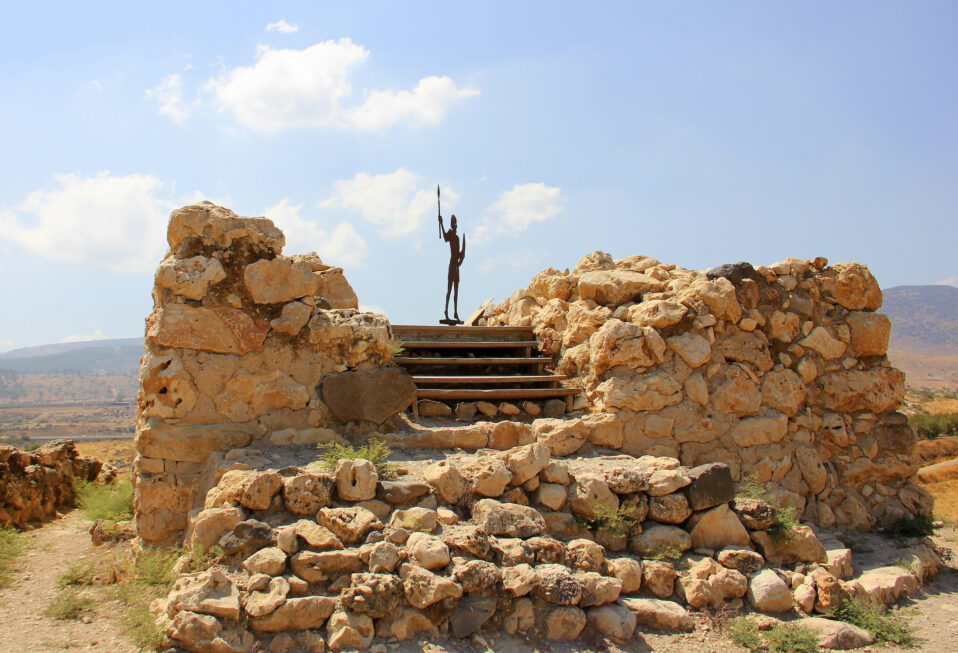One of the largest and most important sites within the land of Israel during the Old Testament period is the city of Hazor. Along with Gezer and Megiddo, Hazor watched over the most important roadway within the Ancient Near East that connected Egypt with Damascus and Mesopotamia; for this reason, according to the book of Kings, Solomon fortified these three cities (1 Kings 9:15).
The international significance of Hazor is attested by its mention in Egyptian execration texts (from the 19th-18th centuries B.C.), as well as the Mari documents and el-Amarna letters, which indicate that Hazor served as a major commercial center within the Ancient Near East.
Hazor is located in the Jordan Valley, nine miles north of the Sea of Galilee, an area referred to as the Huleh Valley. It sits at the foot of the mountains of the Upper Galilee. This international highway that connected Egypt with Damascus and Mesopotamia ran past the mound upon which Hazor sat.
According to the book of Joshua, Joshua conquered Hazor (11:10-13). Deborah and Barak confronted the forces of Jabin, king of Hazor, and his general Sisera (Judges 4-5). The scant references to Hazor in the Old Testament do not reflect its importance within the land of Israel.
Quite often Hazor, like Gezer and Megiddo, found itself, because of its international significance, under the influence of greater foreign powers. In general, the kingdoms of Israel and Judah only controlled these major cities during times when the empires of Egypt and Mesopotamia were in decline.
Excavations of Hazor uncovered a destruction layer of the city during the Late Bronze Age, which some archaeologists identify as the destruction of Joshua. The city consists of two areas: an upper and lower city. The lower city was founded in the Middle Bronze Age. The city reached its zenith in the 14th century B.C. when it was the largest city in Canaan. Excavations of the upper city uncovered a palace, temples, and well as the water system of Hazor.
One of the temples excavated follows a similar pattern in layout to the Temple of Solomon in Jerusalem. Archaeologists discovered a gate complex at Hazor that consisted of six chambers. Similar gate complexes were discovered at Gezer and Megiddo, which led some archaeologists to identify these as connected to Solomon’s fortifications mentioned in 1 Kings.
Marc Turnage is President/CEO of Biblical Expeditions. He is an authority on ancient Judaism and Christian origins. He has published widely for both academic and popular audiences. His most recent book, Windows into the Bible, was named by Outreach Magazine as one of its top 100 Christian living resources. Marc is a widely sought-after speaker and a gifted teacher. He has been guiding groups to the lands of the Bible—Israel, Jordan, Egypt, Turkey, Greece, and Italy—for over twenty years.
Website: WITBUniversity.com
Facebook: @witbuniversity
Podcast: Windows into the Bible Podcast




Post a comment